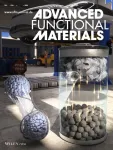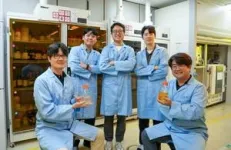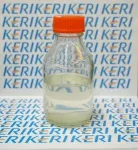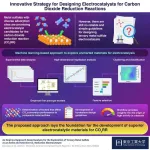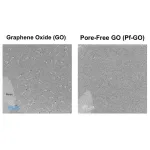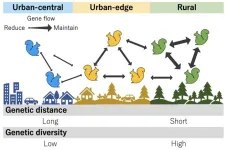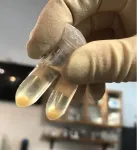(Press-News.org) A team led by Dr. Hyeon-Gyun Im and Dr. Dong Jun Kang from the Insulation Materials Research Center of Korea Electrotechnology Research Institute (KERI), in collaboration with Dr. Jung-keun Yoo from KIST and Professor Jong-soon Kim from Sungkyunkwan University, have developed a technology that enhances the performance of binders—often the 'unsung heroes' in the field of secondary batteries—while using environmentally friendly materials. This technology has been published in a prestigious international journal.
The electrode, which has the greatest impact on the performance of secondary batteries, is manufactured by mixing an 'active material' that generates electricity, a 'conductive material' that facilitates the flow of electricity, and a 'binder' with a solvent. The role of the binder is to help the active material and conductive material adhere well to the metal plate (current collector) and to physically stabilize the electrode.
The binder has a relatively small proportion in the electrode, which has led to slower research progress in the past. However, with the increasing demand for high-capacity and high-performance batteries, interest in binders is growing. Currently, Polyvinylidene Fluoride (PVDF), a fluoropolymer material, is predominantly used as the binder material for lithium-ion battery positive electrodes. However, PVDF is dominated by some global companies in Japan and Europe, and there have been ongoing functional issues, such as decreased battery stability, associated with its use.
Specifically, PVDF is composed of a very strong carbon-fluorine (C-F) bond and is almost indestructible in nature, earning it the nickname 'zombie compound.' Due to its difficulty in decomposition, it remains in the environment for extended periods and is known to emit significant amounts of greenhouse gases when burned. Due to these environmental concerns, the European Union (EU) is considering regulating the use of PVDF. Therefore, the development of binder materials that surpass PVDF is extremely urgent.
KERI has addressed this issue by applying 'siloxane' to positive electrode binders. Siloxane is a compound composed of silicon and oxygen, known for its excellent electrical properties and chemical stability. Dr. Hyeon-Gyun Im and Dr. Dong Jun Kang’s team has secured a 'hybrid siloxane resin manufacturing technology' that combines the advantages of both organic and inorganic materials* through years of research on nanocomposites. They have also developed molecular structure design and synthesis control technologies applicable to positive electrode binders.
* Organic and Inorganic Materials: In chemical structure, if a material lacks carbon atoms, it is classified as inorganic; if it contains carbon atoms, it is classified as organic. Inorganic materials are known for their strength and durability, making them suitable for use in aircraft parts and construction materials. Organic materials, due to the numerous bonds formed by carbon atoms, have complex molecules and exhibit a variety of physical properties (such as resistance and elasticity). Because of these characteristics, organic materials are widely used in electronics, clothing, and other products.
The research team conducted multiple validations by producing full cells using the applied technology. As a result, it was confirmed that the KERI technology exhibits over 1.4 times higher lifespan stability compared to conventional binders with PVDF. While PVDF is known for its physical and chemical stability and good adhesion properties, it has faced issues such as swelling and unwanted side reactions between internal materials as batteries have progressed toward higher capacity and performance. However, KERI's technology has surpassed these limitations.
The major advantage of this achievement is that it does not contain fluorine, making it environmentally friendly and safe for human health. The new technology is expected to not just avoid the EU's environmental regulations aimed at limiting the use of PVDF but significantly contribute to reducing the reliance on imported positive electrode binders.
Dr. Hyeon-Gyun Im from KERI stated, "While Korea’s battery industry is world-class, we currently rely entirely on imports for positive electrode binders due to the lack of specialized technology and companies domestically. Our environmentally friendly binder technology using siloxane has the potential to replace existing PVDF and enhance the safety and lifespan of products requiring high-capacity batteries, such as electric vehicles."
Additionally, the research results have been recognized for their excellence and were recently published as a back cover article in the prestigious journal ‘Advanced Functional Materials’. The “JCR Impact Factor” of the journal is 18.5, ranking in the top 5% of the field.
The research team anticipates that this achievement will attract significant interest from the secondary battery industry and plans to identify potential demand partners to facilitate technology transfer. Furthermore, they plan to apply the developed technology to dry positive electrode binder materials and continue research to extend its use to various areas, including zinc batteries and sodium batteries.
<KERI is a government-funded research institute under the National Research Council of Science & Technology of the Ministry of Science and ICT.>
END
New 'PVDF alternative battery binder' surpasses EU environmental regulations!
2024-09-13
ELSE PRESS RELEASES FROM THIS DATE:
The Menopause Society launches Making Menopause Work™ Initiative
2024-09-13
CHICAGO (Sept 13, 2024)—Menopause is a natural life transition occurring when many women are at the “top of their game.” Unsupported menopause symptoms drive up employer healthcare costs and cause roughly $1.8 billion in missed workdays. To help employers retain these valued workers and build cultures of well-being, The Menopause Society launched Making Menopause Work™ based on new science-based Consensus Recommendations. The Recommendations are published online in Menopause, the journal of The Menopause ...
Exploring ternary metal sulfides as electrocatalyst for carbon dioxide reduction reactions
2024-09-13
One of the most promising avenues for actively reducing CO2 levels in the atmosphere is recycling it into valuable chemicals via electrocatalytic CO2 reduction reactions. With a suitable electrocatalyst, this can be achieved under mild conditions and at a low energy cost. Many types of electrocatalysts are being actively investigated, but most suffer from either low electrocatalytic activity, poor selectivity, or low stability.
Metal sulfides might hold the huge potential solution to this puzzle. By combining ionic and covalent characteristics, this unique family of materials offers good catalytic activity and energy efficiency. The ternary metal system is expected to be a better ...
Breakthrough in proton barrier films using pore-free graphene oxide
2024-09-13
Kumamoto University’s research team, led by Assistant Professor Kazuto Hatakeyama and Professor Shintaro Ida of Institute of Industrial Nanomaterials, has announced a groundbreaking development in hydrogen ion barrier films using graphene oxide (GO) that lacks internal pores. This innovative approach promises significant advancements in protective coatings for various applications.
In their study, the research team successfully synthesized and developed a thin film from a new form of graphene oxide that does not contain pores. Traditionally, ...
Urbanization has impacted the population genetic structure of the Eurasian red squirrel in Japan within a short period of 30 years
2024-09-13
Since many kinds of wildlife have started living in urban environments, urban environments have been recognized as places of biodiversity conservation. What kind of factors facilitate or prohibit wildlife from living in urban environments? Understanding the population genetic structure of urban wildlife living would suggest the hint. In this study, we investigated the population genetic structure of Eurasian red squirrels living in urban to rural areas in Obihiro City, Hokkaido, Japan. As a result, we found that ...
Experimental mRNA cancer vaccine shows potential for advanced stage cancer patients in Phase 1 trial
2024-09-13
Interim data from the Phase I dose escalation part of the mRNA cancer immunotherapy (mRNA-4359), show promise in patients with advanced solid cancers.
The investigational mRNA cancer immunotherapy is targeted for patients with lung cancer, melanoma and other solid tumours. Nineteen patients with advanced stage cancers received between one and nine doses of the immunotherapy treatment. Scientists have found the immunotherapy created an immune response against cancer and was well tolerated, with adverse events ...
Rapid new blood diagnostic test for ALS
2024-09-13
(Jackson, Wyoming – Embargoed until Thursday 12 September 2024 8:00 PM EDT)
A highly accurate diagnostic blood test has been developed for amyotrophic lateral sclerosis (ALS), a progressive neurodegenerative disease that effects neurons in the brain and spinal cord.
ALS leads to gradual paralysis, ultimately resulting in the inability to walk, speak, or, in later stages, move. Currently, diagnosis is based on a thorough clinical examination, but it can take up to 12 months to provide a definitive diagnosis, by which time many patients have significantly ...
Ignore antifungal resistance in fungal disease at your peril, warn top scientists
2024-09-12
Without immediate action, humanity will potentially face further escalation in resistance in fungal disease, a renowned group of scientists from the across the world has warned. The commentary - published in The Lancet this week - was coordinated by scientists at The University of Manchester, the Westerdijk Institute and the University of Amsterdam. According to the scientists most fungal pathogens identified by the World Health Organisation - accounting for around 3.8 million deaths a year - are either already resistant or rapidly acquiring resistance to antifungal drugs.
The authors argue that the currently narrow focus on bacteria will not fully combat antimicrobial resistance ...
Increased testing for heart disease indicator needed worldwide
2024-09-12
Review in The Lancet finds that one in five globally are at risk of contracting cardiovascular diseases, because they carry a genetic risk of high levels of a specific lipoprotein, which can be tested for and possibly treated.
20 % of the world population carries a genetic risk factor for cardiovascular diseases such as heart attacks, strokes, and aortic valve stenosis: Increased levels of a lipid particle called lipoprotein(a). It is the most common genetic cause of cardiovascular diseases.
“Lipoprotein(a) is the direct cause of cardiovascular diseases much like cigarettes cause ...
Huge gamma-ray burst collection 'rivals 250-year-old Messier catalogue'
2024-09-12
Huge gamma-ray burst collection 'rivals 250-year-old Messier catalogue'
Royal Astronomical Society press release
RAS PR 24/24
Embargoed until 00:01 BST on Friday 13 September 2024
Hundreds of gamma-ray bursts (GRBs) have been recorded as part of an enormous global effort so extensive it "rivals the catalogue of deep-sky objects created by Messier 250 years ago", astronomers say.
GRBs are the most violent explosions in the Universe, releasing more energy than the Sun would in 10 billion years. They occur when either a massive star dies or two neutron stars merge.
The explosions are so ...
Crude oil decimates sea otter buoyancy
2024-09-12
Sea otters are famed for their luscious pelts, but the fur almost led to their extinction. By 1938, only a tiny population of ~50 remained clinging to the central California coast. Since then, the mammals have battled back; however, the charismatic creatures are still at risk from crude oil spilled by offshore rigs. But no one knew how severely crude oil impacts the buoyancy of sea otter fur or how well it recovers after cleaning. And Kate Riordan from California Polytechnic State University San Luis ...
